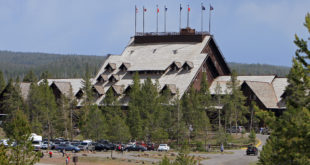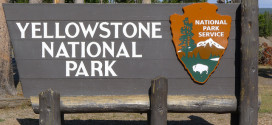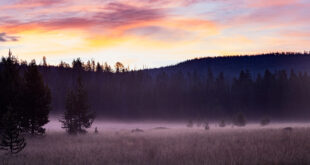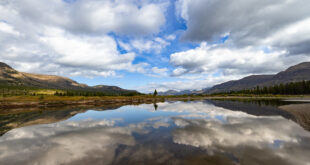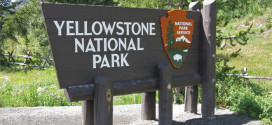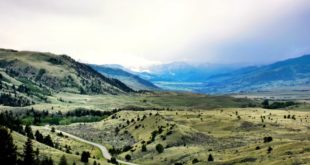The mountain snow pack acts like a frozen reservoir of water that slowly releases into the streams and rivers of the region during the summer months, providing a supply of water to fish, wildlife, ranchers, and farmers that is less fickle than the summer rains. In recent years that snow pack has been dwindling, right along with the levels in key lakes and reservoirs throughout Wyoming, Montana, and Idaho. This year, however, while hardly a record the depth of snow has come back to previous levels. As Yellowstone Park spokesman Al Nash put it, “This winter may have had the most snowfall it has seen in seven to ten years.”
The National Weather Service in Riverton, Wyoming has reported a state-wide snow to water equivalent (water trapped in snow pack) about 25% higher than last year. This could help fill depleted reservoirs such as Jackson Lake in Grand Teton National Park and Boysen Reservoir in central Wyoming.
More snow in the mountains is good news, but it’s given the park service a few headaches trying to open Yellowstone Park roads for the beginning of the season. Already two bulldozers that were clearing snow between Mammoth Hot Springs, Norris, Madison Junction, and Old Faithful have broken down and had to be replaced with rental units. This stretch of the Grand Loop Highway is scheduled to open Friday April 18 – but as is always added: “Weather permitting”. Other segments of the park’s highways are scheduled: Canyon to Lake and Lake to East Entrance – Friday, May 2; Lake to South Entrance and West Thumb to Old Faithful – Friday, May 9; and Tower Fall to Canyon and the Beartooth Highway – Friday, May 23.
The level of snow still in the mountains is also a potential problem – if the summer heat comes too fast or too intensely, then the melting snow can cause flooding, especially if unusual rains are added.
 Yellowstone Insider Your Complete Guide to America's First National Park
Yellowstone Insider Your Complete Guide to America's First National Park
